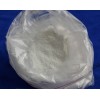Estradiol, or more precisely, 17β-estradiol, is a steroid and estrogen sex hormone, and the primary female sex hormone. It is named for and is important in the regulation of the estrous and menstrual female reproductive cycles. Estradiol is essential for the development and maintenance of female reproductive tissues but it also has important effects in many other tissues including bone. While estrogen levels in men are lower compared to women, estrogens have essential functions in men as well. Estradiol is found in most vertebrates as well as many crustaceans, insects, fish, and other animal species.
Estradiol or oestradiol (American or British English usages), derives from estra-, Gk. οἶστρος (oistros, literally meaning "verve or inspiration")and -diol, a chemical name and suffix indicating that this form of steroid and sex hormone is a type of alcohol bearing two hydroxyl groups.
Estradiol is produced especially within the follicles of the female ovaries, but also in other endocrine (i.e., hormone-producing) and non-endocrine tissues (e.g., including fat, liver, adrenal, breast, and neural tissues). Estradiol is biosynthesized from progesterone (arrived at in two steps from cholesterol, via intermediate pregnenolone).One principle pathway then converts progesterone to its 17-hydroxy derivative, 17-hydroxyprogesterone, and then to Δ4-androstenedione via sequential cytochrome P450-catalyzed oxidations.[citation needed] Action of aromatase on Δ4-androstenedione generates estrone, and action of a dehydrogenase on this gives the title compound, 17β-estradiol.[citation needed] Alternatively, Δ4-androstenedione can be converted into the androgen, testosterone, which in turn can be converted directly into 17β-estradiol.















